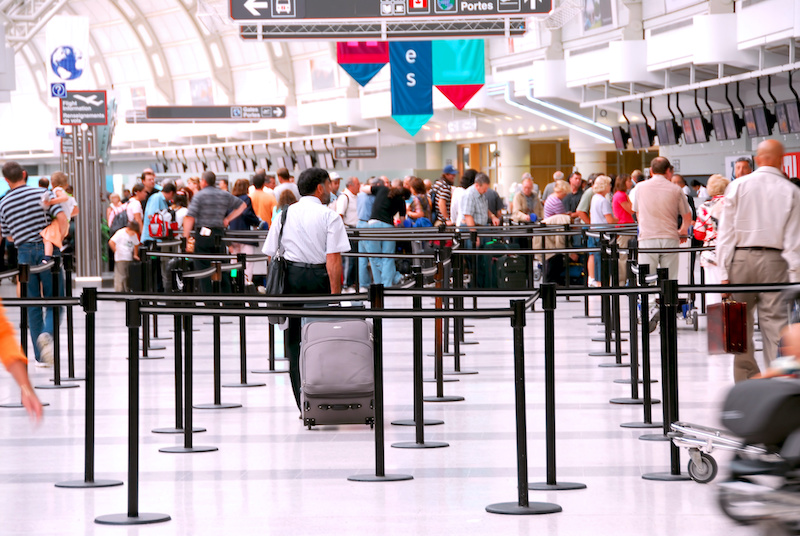Recommended

WORKING PAPERS
Given that international travelers introduced COVID-19 to almost every country in the world, it's natural to associate international mobility with the spread of disease. During the pandemic, 179 countries have implemented some form of travel restrictions. And beyond COVID-19, some countries may uphold such restrictions for fear of the next pandemic.
A new CGD working paper addresses just that, asking whether permanently reducing international travel could save lives in future pandemics. To think about that future, we looked back in history.
Analyzing data from four past pandemics, we find that extending such restrictions would actually have no meaningful impact on health outcomes. Temporary travel restrictions during a pandemic may be a part of an overall strategy to save lives, though many public health experts are doubtful. But permanent reductions in international mobility—the focus of our paper—would impose massive costs on the global economy with little effect on health outcomes.
Looking back at four historic pandemics
In our paper, we look at four historic pandemics: the “Russian flu” (1889), the “Spanish flu” (1918), the “Asian flu” (1957), and the “Swine flu” (2009). We chose these four because they all…
-
...have ended. Our main outcome of interest is the total number of deaths from the pandemic. Given that mortality from COVID-19 unfortunately continues, we therefore leave the ongoing pandemic for future research.
-
...affected a broad number of countries. While the SARS outbreak of 2002, the MERS outbreak of 2012, and the Ebola virus outbreak of 2013 each caused substantial death rates in select countries, the four we explore affected a broader population worldwide.
-
...spread quickly. For example, the Zika virus and Human Immunodeficiency Virus (HIV) took decades to spread across countries and continents. The four presented here spread much more quickly (within five months).
-
...have location-specific estimates of their final impact. For some pandemics, especially older ones, there are no estimates of the overall mortality by country or city for a large number of countries. That is not the case in these four historic examples.
Figure 1. The timing of these four pandemics
In our analysis, we look at two main questions.
First, do more international arrivals, before a pandemic starts, cause the disease to arrive earlier? We test this directly for the 2009 Swine Flu outbreak, where pre-pandemic travel data are available. Our estimates show that if a country experienced 50 percent less international mobility before the pandemic, it would only delay the arrival by roughly one week.
We then look across all four pandemics. While the volume and speed of international travel increased more than tenfold between 1889 and 2009, the time it took for pandemics to reach most of the world’s population varied by only about six weeks. Overall, pandemic diseases spread too fast, and the number of arrivals would still be too high, for limits on travelers during the interpandemic period to make a meaningful difference.
Second, could a delay in pandemic arrival save lives? It’s possible, for instance, that a slight delay could change the domestic response to a disease. We find no evidence for this, however, in the four pandemics we study. Countries where the disease arrived later did not have fewer deaths, and countries more exposed to international travel did not experience higher mortality. An early, robust response is critical, but its effectiveness is determined by much more than a few days’ notice.
While maintaining permanent travel restrictions would therefore not have a meaningful impact on health outcomes, it would have a severe economic and social cost. International commerce and tourism employ millions. Migration—despite only accounting for 0.8 percent of international trips, according to our estimates—raises wages and facilitates the exchange of ideas. According to the McKinsey Global Institute, migrants contributed roughly US$6.7 trillion, or 9.4 percent, to global GDP in 2015—economic gains that contribute to health technologies and other effective preparations for the next pandemic.
What to do instead of permanent travel restrictions
To be clear, our research addresses reductions in global mobility before a pandemic hits. We conclude that permanent travel restrictions in an attempt to prevent future pandemics should not be adopted.
So can international travel safely be resumed during COVID-19?
-
A few countries with similar infection rates have created temporary “travel bubbles,” such as Estonia, Lithuania, and Latvia, in which citizens can travel freely between neighboring countries with oversight. There is potential to make such bubbles larger as health conditions allow, but evidence of their effectiveness remains limited.
-
Our colleagues Alan Gelb and Anit Mukherjee explain that there is technological capacity to create a digitized certificate of vaccination (for COVID-19 now, and other pandemics in the future). Accessibility is crucial to prevent a further consolidation of the relationship between income and international freedom of movement.
Once the pandemic is under control (wide scale global distribution of a COVID-19 vaccine could take as long as 2024), what should we do to prepare for the next pandemic?
-
Countries must fortify domestic preparedness. For example, Azziz-Baumgartner, et al. outline steps for governments and civil society in low- and middle-income countries to design a pandemic preparedness plan well in advance.
-
The International Health Regulations (IHR) dictate that policymakers should routinely conduct evaluations of capacity at ports of entry, whether by land, sea, or air. An established legal framework through which standard operating procedures are established, such as where travelers would be required to isolate and under what conditions, is critical to proactive, rather than reactive, success.
Moving beyond COVID-19, there are important domestic and international regulations that can help save lives in a future pandemic. Restricting global mobility in the meantime—and foregoing all of its benefits—is not one of them.
Disclaimer
CGD blog posts reflect the views of the authors, drawing on prior research and experience in their areas of expertise. CGD is a nonpartisan, independent organization and does not take institutional positions.
Image credit for social media/web: Adobe Stock





